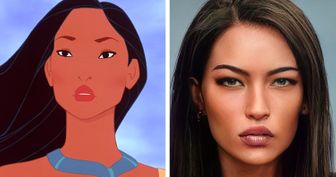15 Celebrities and Their Look-Alikes From the Past That Baffled Us

Germans, Serbs, French, and Arabs — there are so many nations and different ethnic groups that we’ve seen, met, or read about. But there are also those that we’ve never heard of or that we thought had disappeared. But in reality, they continue to keep their traditions and their languages alive, and they also give the world talented people, such as Renée Zellweger.
We at Bright Side think that it’s possible to find out more about the world not only by traveling but also by reading about little-known ethnic groups from around the world. This article will tell you about some of them.
The Sámi people are indigenous individuals who inhabit Sápmi, which today, are large northern parts of Norway, Sweden, Finland, and the Kola Peninsula. Many of them live in North America. For example, American actress Renée Zellweger has Sámi ancestors.
The Sámi people refer to their motherland as Sápmi, and they’ve been called Laplanders. Even today, reindeer herding is one of the basic things they do, and in Norway and Sweden, only Sámi people can legally do this task.
These people gave the name to the island they live on and the region of Italy. But the Sardinian language is not an Italian dialect but a different language.
Many Sardinian people are very protective of their historical background. They still have traditional last names, like Sanna (fang), Piras (pears), Pinna (feather), and Melis (honey). Every year, there are a lot of national holidays and festivals in Sardinia, and in the streets, you can even see the older generation of people wearing traditional clothing.
Pashtuns are part of the Iranian people, and they still live in an ancient social structure consisting of tribes and tribesmen. These tribes are divided into clans. Pashtuns follow an ancient Pashtunwali code, so they solve all their conflicts, estimate one’s actions, and regulate the relationships between people according to the code. Because of this, a Pashtun is supposed to be hospitable and accept people of any status, faith, or nationality. They are supposed to give shelter even to their worst enemies if they need it.
This is one of the indigenous ethnic groups of Taiwan, and they have a lot of matriarchal rules. In the past, even property was passed through the maternal line. At the moment, women are in charge of the family and financial matters in this society. They are famous for their complex singing that is so unusual and cool-sounding that the creators of Enigma even used it in “Return to Innocence.”
The Nuristanis, also known as Kafiristanis, are an ethnic group of Afghanistan. In the area where they live, they are often farmers, herders, and dairymen. In the fourth century BCE, Alexander the Great encountered this group and described them as being distinct, both culturally and religiously, from other peoples of the region. A Persian commander named Babur advised not to tangle with them. Even Genghis Khan passed over them.
The Ramapough Mountain Indians are an ethnic group living in New Jersey and southern New York. They are the descendants of the Lenape people and are trying to restore their national language, even though most of them speak English. In order to become a member of this group, you have to show papers proving that you have at least 3 generations of Ramapough in your family.
The Erzyas are distant relatives of the Finns and Estonians, and they live in Mordovia. This is one of the 2 Mordovian people that have similar languages and customs. In this culture, women are worshipped. Mordovian women are often stronger than men, so they are dominant in the family.
They believe in the powers of nature — they have traditional holidays with pagan roots. They also try to save their national language — the children in this area can choose to learn the language. The government supports the production of newspapers and magazines in their language.
Khmer people live in Cambodia and make up more than 90% of the population of the entire country. They are followers of the Khmer style of Buddhism, and most of them are farmers and fishermen. There’s a legend about the origin of the country that is taught in Cambodian schools. One Indian priest followed an arrow he saw in his sleep. He found an island and fought the army of Princess Soma. He fell in love with her, so the princess’s father gave him the island and drank the water around it. So the island is at the top of the mountain. The land under the mountain is known today as Cambodia.
They are the largest ethnic group in Cameroon and inhabit the country’s West Region. The group is divided into groups with tribesmen and kings. Throughout the entire history of Cameroon, it has been colonized by European countries, England and France, but it was during the time when it was controlled by Germany that the Bamileke term first appeared. Colorful masquerades are an important part of their culture. They wear elephant, leopard, and buffalo masks during special ceremonies.
Maybe you know something about other rare groups of people with an interesting history? Share what you know in the comment section below!











